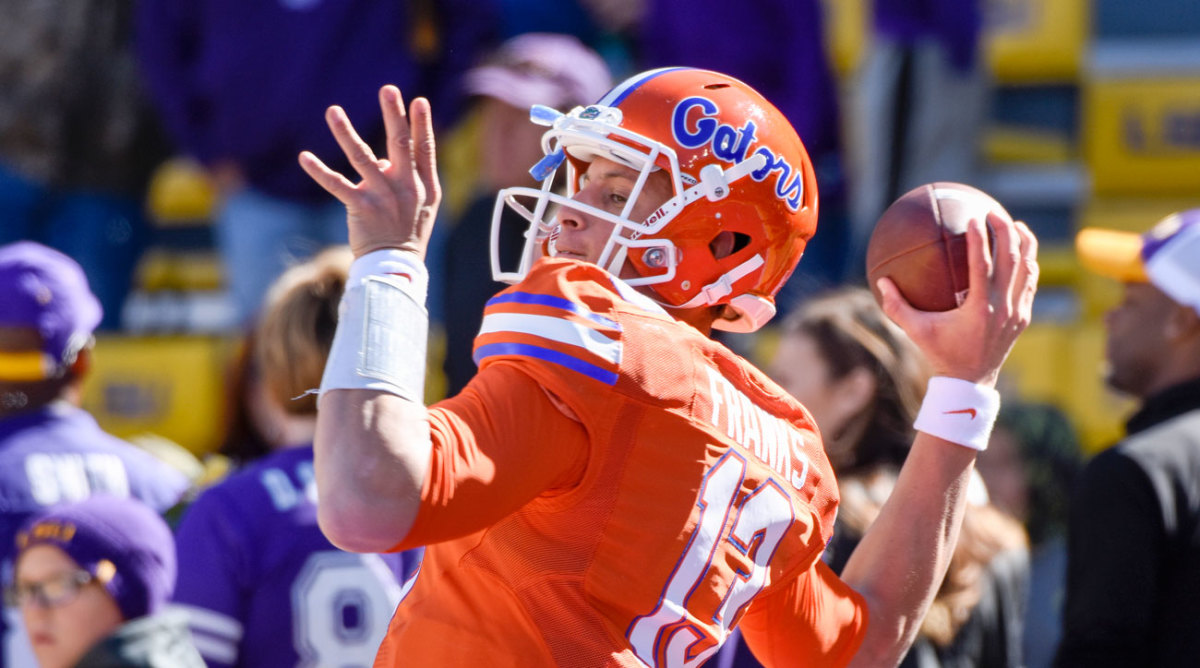A Modest Proposal: Let redshirting freshmen play in bowl games with no eligibility penalty

The annual handwringing about the number of bowl games combined with the soon-to-be annual pearl clutching when three of about 5,600 bowl-bound players opt out of playing in lower tier games hasn’t exactly elevated the national college football discourse. It has, however, produced one great idea.
This is simple and brilliant. In fact, it is so simple and brilliant that it’s difficult to imagine the schools—who traditionally like to create as much red tape as possible—passing an NCAA rule that would allow redshirting players to play in their team’s bowl game without losing a year of eligibility. But it would be excellent.
Imagine Ohio State putting in a package for freshman quarterback Dwayne Haskins, who instead will spend the run-up to the Fiesta Bowl mimicking Clemson’s Deshaun Watson on the scout team. Imagine Alabama beefing up its linebacker depth following the injury to Shaun Dion Hamilton with Ben Davis, who probably would have played this year if not for a preseason ankle injury.
This would be even more helpful to teams farther down the bowl pecking order. Because of the stakes, coaches in the playoff aren’t as likely to toss in redshirting players who have yet to appear in a game. But for coaches outside the playoff, where bowl practice is basically a head start on spring practice, the concept could be a godsend.
College football’s bowl system is thriving, with or without some of its stars
Consider the situation at Nebraska. Starter Tommy Armstrong has been limited by a hamstring injury. Backup Ryker Fyfe has an injured wrist. It would be nice if the Cornhuskers had the option to play freshman Patrick O’Brien in the Music City Bowl against Tennessee, but coaches aren’t about to burn O’Brien’s redshirt. That means they’ll probably trot out an injured quarterback against Derek Barnett and the Volunteers’ pass rush. What would be more interesting and humane? Watching an injured player try to survive against one of the nation’s best pass rushers or getting a sneak preview of the quarterback derby between O’Brien and Tulane transfer Tanner Lee that will take place during spring practice?

Florida doesn’t have two injured regulars at quarterback, but the Gators do suffer from one injury and a general lack of production on offense. Austin Appleby likely will start at quarterback when the Florida faces Iowa in the Outback Bowl. Previous starter Luke Del Rio, who injured his shoulder earlier in the season, will try to get healthy enough to play but may need more time. So what happens if Appleby gets hurt during the game and Del Rio still can’t play? Under the current rules, Gators coach Jim McElwain isn’t going to burn the redshirt of either Feleipe Franks or Kyle Trask. But what if a rule change made those redshirts fireproof? McElwain could hold a competition during bowl practice to pick which freshman would back up Appleby, it might provide valuable information for the coming open competition in spring practice between Del Rio and the current freshmen.
2016 College Football Year in Review
If Appleby got hurt or was simply ineffective against the Hawkeyes, McElwain could try one of the two youngsters. Some Florida fans, angry with the lack of offensive production at the end of the season, had suggested burning one of the players’ redshirts for the bowl anyway. This was a silly idea for a variety of reasons, but if redshirting players could play, then it wouldn’t be a terrible idea.
The schools might have to tack on one addendum to avoid a rare situation, but it would be easy. Quarterback Jalen Hurts joined Alabama’s team last January as an early enrollee. He played Watson at practice as the Crimson Tide prepared to face Clemson in the national title game. He didn’t redshirt the 2015 season, so he wouldn’t have been eligible to play. So add some language to the rule that bans players who played high school football that season or players who weren’t full-time students at their college during the fall semester of that season. Also, the schools love their precious transfer restrictions, so players sitting out a season after transferring would still be ineligible to play. In other words, Oklahoma couldn’t create a package for former Texas A&M quarterback Kyler Murray in the Sugar Bowl.
The case for Ohio State to win the College Football Playoff
This rule tweak has little downside, and it’s difficult to imagine who would oppose it. Coaches would love it because their rosters are depleted by injury at this point in the season. Fresh bodies would help their teams. Redshirting players would love it because redshirt years can feel like interminable slogs. They’d be more attentive in meetings and at practice down the stretch in October and November if they knew their good habits could result in playing time in late December or early January. Fans would love it because they’d get a sneak peek at the future. Even if their team had a disappointing season and wound up in a lackluster bowl, they’d be much more interested in the bowl game if they thought there was a possibility of seeing a new star rise.
College football isn’t going back to the era when only the best teams play in bowl games. Bowls are reliable inventory for television networks and reliable revenue sources for conferences and schools, so every team that goes at least 6–6—and some that go 5–7—will play in one. So why not alter the rules just a little to make them more interesting for the viewer and easier on the coaches and their teams?
